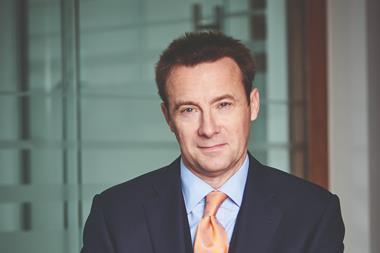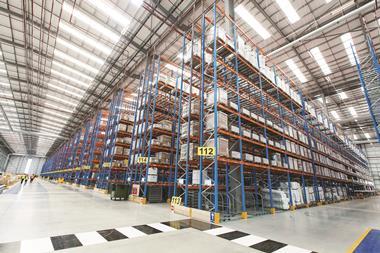After two years of unprecedented challenges faced by real estate, experts share their predictions for 2022.
Peter Fisher
Director, Bennetts Associates
Last year was a significant one for net zero carbon commitments – the number of FTSE 100 companies with net zero carbon commitments more than doubled in the six months between March and September and more than 50% of these now have science-based targets.
We’d like to see 2022 be the year when net zero carbon is properly understood, with hard data and meaningful targets. Guidance from organisations such as UKGBC and LETI gives Paris Agreement-proof targets, while UK NABERS or Design for Performance provide the tools required. Project briefs, occupant expectations and design approaches need to change. Proper net zero carbon is difficult. It is not just another sustainability tick-box and business as usual will not be sufficient.
We hope 2022 is the year that whole-lifecycle, upfront and embodied carbon become better understood, with numbers replacing adjectives. We’d also like to see the industry properly embrace circularity – both in the way buildings are conceived and operated and in how the infrastructure to support a more circular economy is supplied.

Paul Rostas
Co-founder and co-chief executive, Plus X
Perceptions of the purpose of the office have dramatically shifted in the past two years and will only keep evolving in 2022, but Plus X believes the office remains a critical driver of collaboration and innovation. Innovation should be for everyone and we want to see the role of SMEs in the innovation economy valued. We must provide sufficient space and support to aid these businesses that are vital to the market.
Sweeping changes to flexible working policies have left larger companies with an excessive amount of underused office space. The support offering from traditional flex operators is limited and we expect to see more corporates creating innovation spaces, collaborating with SMEs, universities and local communities.
Providing businesses with support programmes and technology facilities enables them to grow and scale up in a sustainable way – ultimately creating high-value jobs and enduring centres of innovation deeply rooted in local communities. The true meaning of levelling up?

Will Astor
Chief executive, Long Harbour
There were many reasons to be positive about real estate’s resilience as an asset class as 2021 drew to a close. But rising inflation is a concern in 2022 and as a result, long-income property investment is also on the rise.
As such, 2022 will see a further unlocking of the UK and European residential and commercial ground lease markets. The strength of the ground lease structure, delivering long income for investors seeking an alternative to bonds, provides an inflation hedge for both the income received and capital values over time. The system also enables occupiers to unlock buildings’ value without disrupting operations, and provides a viable alternative to traditional finance.
In 2022, we will also see more corporations turn words and sentiment on decarbonisation and ESG commitment into solid action. This will be from an environmental and social perspective as investors, consumers and occupiers continue to place increased fiscal and moral value on these important elements of business.

Faisal Butt
Chief executive, Pi Labs
In 2022, we can expect the size of proptech fundraisings to keep increasing, as a more diverse range of blue-chip investors allocate capital at later-stage rounds.
Capital from the US seeking investment opportunities in Europe will be a particularly prominent theme, particularly as Silicon Valley institutions realise returns are available if the right company is backed at the right stage. This will be underpinned by increased adoption, as technologies emerge to solve the critical pressure points around sustainability goals, supply chain issues, construction practices, workplace wellbeing and the evolution of retail.
With a larger weight of capital backing some leading proptech companies, there is likely to also be a spike in M&A activity, with the larger and more established players acquiring similar or complementary businesses to consolidate their position and gain entry to new markets.

Daniel Hajjar
Managing principal, HOK
This year, leasing, renovation and development will approach pre-pandemic levels, with sustainability driving the long-term trend towards retrofitting rather than rebuilding.
There have been various theories floated on the future of the workplace, but few of them are coming true. The glut of office space many predicted would be released back on to the market has not materialised. However, what has developed is a realisation that the nature of work relies on individual working coupled with collaborative learning and development.
This year is likely to see us focus on the revival of our culture and inspiring young minds into the profession, as without this investment, our future will be on shaky ground. This applies across all sectors of our economy and unless we show resilience and flexibility, the future debate around the nature of work will be an academic exercise of speculation.
Peter Clayton
Head of property finance, Leumi UK
Given the Bank of England’s surprise decision to raise interest rates late last year – the first rate hike in three years, and only the second December rise in half a century – the concept of a ‘transitory’ inflationary environment seems to be be losing currency on Threadneedle Street.
However, there are certain benefits of a high-inflation environment for the property industry. In such a context, real assets hold value and provide steady income at a rate above other safe bets such as stocks and bonds.
Given the 0.25% rate is only slightly above a historic low of 0.1%, these dynamics are likely to continue through 2022, fuelling increased appetite for inflation-hedging property investments with relatively short leases, such as purpose-built student accommodation or build to rent. While it would be improper to wish for high inflation, there are some benefits to it, too.

Paul Arenson
Chief executive, Industrials REIT
In the multi-let industrial (MLI) space, occupier demand will continue to grow from a constantly enlarging pool of diverse businesses needing more space empowered by the communications and ecommerce revolution. Supply will continue to be restricted by a lack of land in and around densely populated cities and towns where these units need to be.
This year looks likely to be another one of 5%-plus like-for-like rental growth, as it was in 2021 and 2020 for the MLI sector. The move to tech-enabled managed platforms will gain momentum as owners of MLI property become more operational, flexible and service focused.
ESG will be high on investors’ agendas and the true cost of meeting carbon targets will become more quantifiable across asset classes. The MLI sector will also further demonstrate its resilience to Covid-19 with strong rent collections and further acceleration of the trend toward ecommerce-enabled businesses.

Andrew Shepherd
Managing director, TopHat
In 2021, Santa delivered for the modern methods of construction (MMC) industry, which has been catapulted to the top of the industry and government agenda over the past year. Neatly wrapped packages of institutional investment have accompanied the funding and policy support signalled by the government.
Inflation, the labour crisis and growing urgency about sustainability have brought into sharp focus the need for an alternative solution to traditional development. It has been encouraging to see the concerted effort by developers, designers, planners and other stakeholders to understand the technologies, methods and benefits involved. A quick glance at the order books of central figures attests to that.
In 2022, the MMC sector will be in a stronger position to tackle core issues, such as scalability and sustainability, as capital and industry interest ramps up.
Continue to part 51 here
Predictions for 2022: Brace yourself…
- 1
- 2
- 3
- 4
 Currently reading
Currently readingPredictions for 2022: Brace yourself (part fifty)
- 5
- 6
- 7
- 8
- 9
- 10
- 11
- 12
- 13
- 14
- 15
- 16
- 17
- 18
- 19
- 20
- 21
- 22
- 23
- 24
- 25
- 26
- 27
- 28
- 29
- 30
- 31
- 32
- 33
- 34
- 35
- 36
- 37
- 38
- 39
- 40
- 41
- 42
- 43
- 44
- 45
- 46
- 47
- 48
- 49
- 50
- 51
- 52
- 53




















































































No comments yet